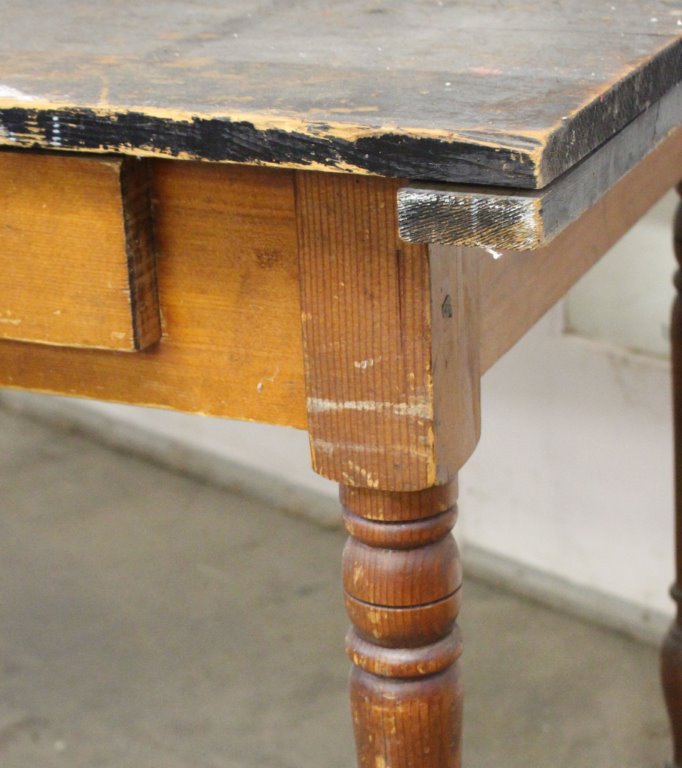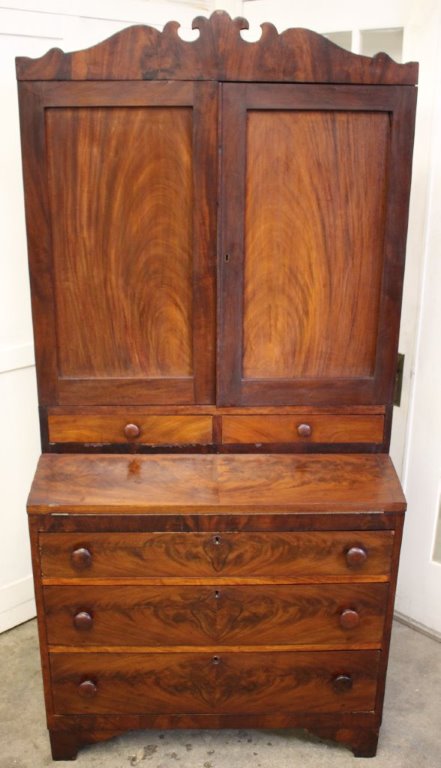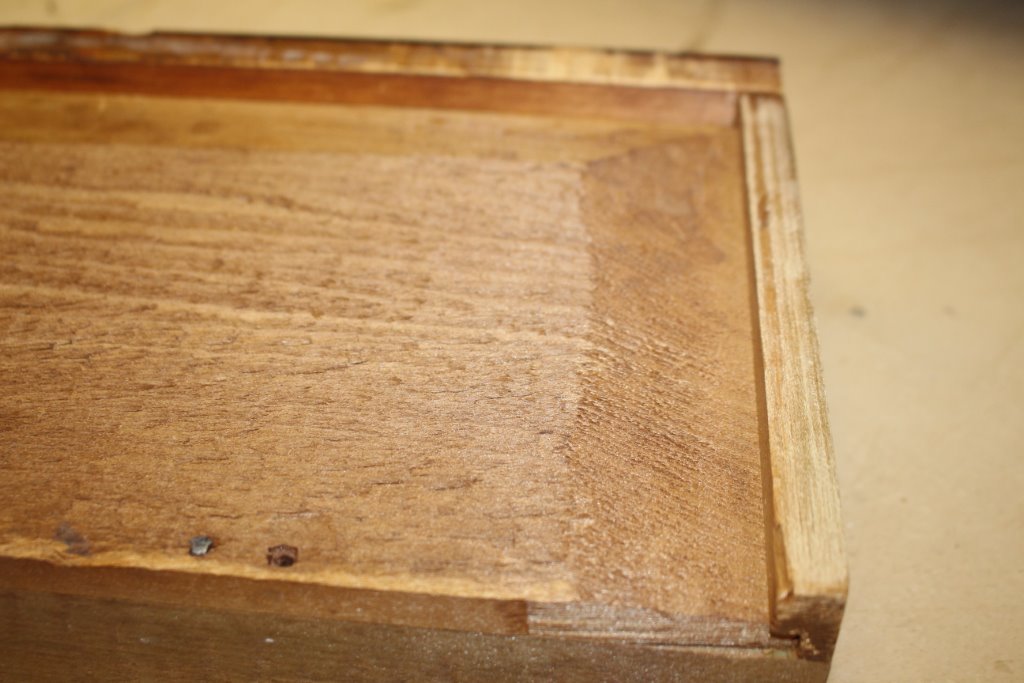by Dave Emigh
It is hard to have a dialogue with a piece of furniture. Even though wood is an organic material, it does not have much of a vocabulary. However that does not mean a piece of furniture can’t tell a story, especially if you are open to ‘listening’ for it.
There is really no chance of that happening on a project that only takes a couple of hours to complete. But on larger projects, which stretch out over several days, there is a good chance that a dialogue will begin to take place. When that happens, a ‘relationship’ gradually develops.
During our restoration projects, we often find things that perplex us. Recently I restored a farm table/desk. There were two boards nailed underneath the ends of the tabletop. Those boards fell exactly into the category of things that perplex us.

It seems to me that there were at least three possible reasons for those boards. They may have been added to stabilize the loose legs (but they were still loose). They may have been added because the tabletop had a crack in it (which it did). The third possibility is that they were added so that 1880’s to 1900’s hand-cranked kitchen tools, such as apple peelers or cherry pitters, could be clamped to the top. Thus the dialogue begins.
The thing is, unfortunately, we will never know exactly what prompted the addition of the boards. Whatever the reason for that repair/adaptation, it tells an additional story. It speaks to rural life a hundred years ago and even much earlier.
Those were the times when many farms barely produced enough to feed a family. The production of enough excess food to sell (to make money) was problematical if not impossible. Money was scarce to non-existent and everything was used well beyond the point of usefulness.
The table that I restored is emblematic of pieces that failed, were repaired/repurposed and then were used some more. That story is greater to our understanding of society/history than is the story of what specifically happened to the table itself.
In the case of the farm table, the additional boards posed the question that started ‘my dialogue with the table,’ and thus a relationship with the piece. Sometimes I pose the questions myself. This is particularly true with pieces of furniture that were handcrafted.
It is generally accepted that the transition from hand-built furniture to machine manufactured furniture began somewhere in the 1850s. Obviously some craftsmen continued to work with hand tools even as others began to use machinery.

I am always honored to have the opportunity to own, let alone, restore a handcrafted piece of furniture. I do not take this opportunity and/or responsibility lightly. The fact that a handcrafted piece of furniture has survived for over 170 years is amazing! Thus the dialogue begins as I ask myself what I could do today that would still be in existence 170 years from now?
I approach the restoration of a handcrafted piece of furniture with a very light hand. I strive to make my restoration efforts essentially invisible. There will be no stripping or sanding of their finish.
These pieces were fabricated with hand tools such as saws, planes and chisels. Their construction featured hand-cut joints, further strengthened with (animal) hide glue and perhaps a few screws and/or square nails. They were often finished with shellac, wax or a combination of both.
My restoration job begins with re-gluing loose pieces and replacing missing internal pieces such as drawer runners or stops. Then I enhance the original shellac finishes with techniques that are well short of ‘refinishing’ the piece. A coat of wax is applied and the piece is finished.
During these processes, I am standing in front of a workbench, working on the piece, just as the original craftsman was 170 years ago. When I am feeling the hand-planing marks that he left behind, I am ‘in touch with him.’

A craftsman of the era would plane a board and then feel the surface. I know (without a doubt) that he would have asked himself if this felt true, level and smooth enough. At some point, he decided that it was good enough and moved on to the next step.
Now I run my hand over that board and agree with his assessment. How amazing it is that I can ‘hear’ a craftsman’s (170 year old) question, which was undoubtedly never verbalized. Further, that I agree with his (internal) answer all of these years later?
I am just like everyone else who wanders through an antiques shop. I will look at pieces of furniture and think that I like this piece but I do not care for that piece. Depending on the day, my judgment might be based upon the styles, the functions or the appearances of the pieces.
It is only when a piece is in my workshop that the dialogue and, yes, the relationship begins to build. As noted, that relationship might be with the piece itself or with the craftsman who built the piece.
There are two parts to the antiques business that I find extremely rewarding. The first is the opportunity to restore a piece of furniture to give it a second life. The other reward happens in those fleeting moments when a dialogue begins and a relationship is developed…
Dave Emigh and his wife Jill are the owners of Shady Lawn Antiques in Walla Walla, WA, perfectly located in the 1870’s wood frame creamery buildings that Dave’s great-grandfather purchased in 1897. Dave, a professionally trained woodworker, and his son Nick specialize in the restoration of oak furniture. Shady Lawn, in its 26th year, has become a regional destination for oak furniture but is also known for a well-curated display of country, rustic, and rare and unique “small” antiques. Glimpses of the ever-changing Shady Lawn inventory can be seen on Facebook and at www.shadylawnantiques.com.
